
Where’s Puerto Quetzal ? It’s a question more travellers are asking these days as Guatemala emerges as a cruise destination. A dozen cruise lines have added the once little-known port to their Pacific and Panama Canal itineraries in the past couple of years.
A bigger question about Guatemala’s main container port is: what do you do when you get there? It’s basically an industrial town surrounded by banana plantations.
Fortunately, a tour to a city that was once the capital of a Latin American empire makes for a fascinating and satisfying day’s outing on a day docked in Puerto Quetzal.
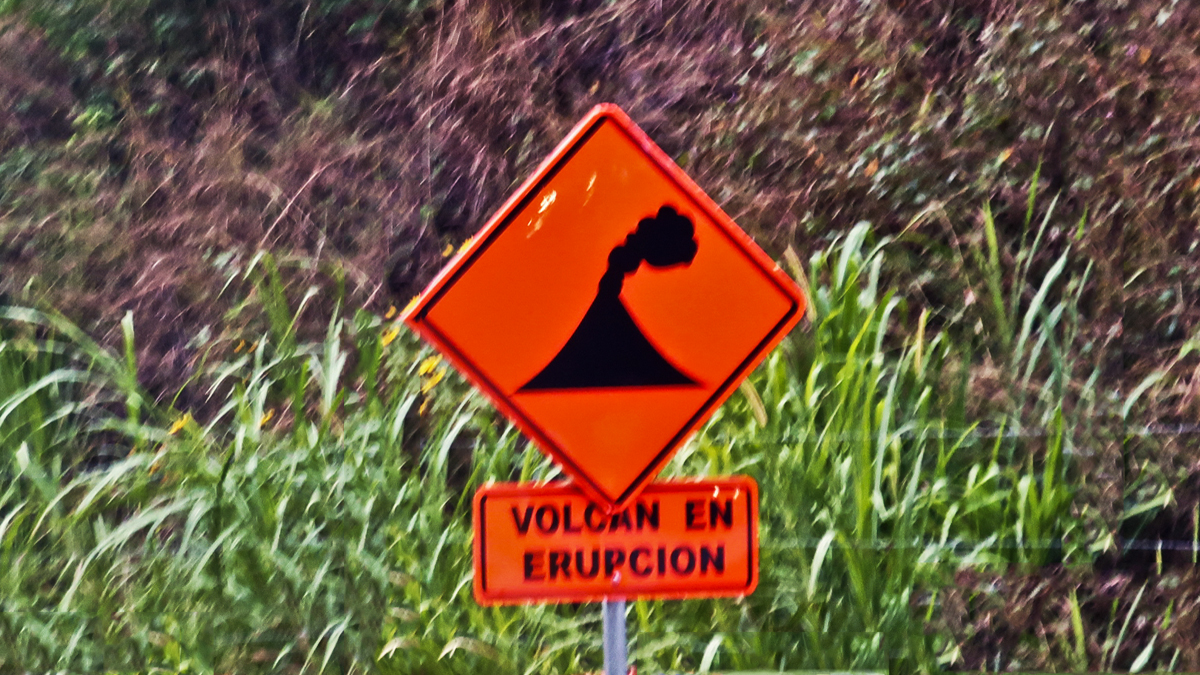
1) Nature messes but also blesses
As is typical of places that were originally Mayan, Antigua Guatemala is in the highlands rather than on the coast. The hour-plus drive from the port is a beautiful journey, although it sums up why the city didn’t make the cut as a capital. It was built on shaky ground.
This part of Central America is notably prone to earthquakes and volcanic eruptions, including one in 2018 that pushed searing rivers of lava across the road to Antigua and in the process wiped out entire villages. Houses that weren’t engulfed were still torched by the heat and ash. Many of the charred remains were homes that had only recently been rebuilt after being buried by mudslides from horrendous flooding during Hurricane Agatha in 2010.
On the plus side, all the volcanic ash makes the soil incredibly rich in nutrients. Along the road, the fields are lush with the produce that are main exports of Guatemala. The sugar cane fields, fruit orchards, banana plantations, and orchid farms in the valleys are vast and the surrounding hills are checkerboards of small vegetable plots, where farmers tend crops on slopes that can be as steep as 45 degrees.
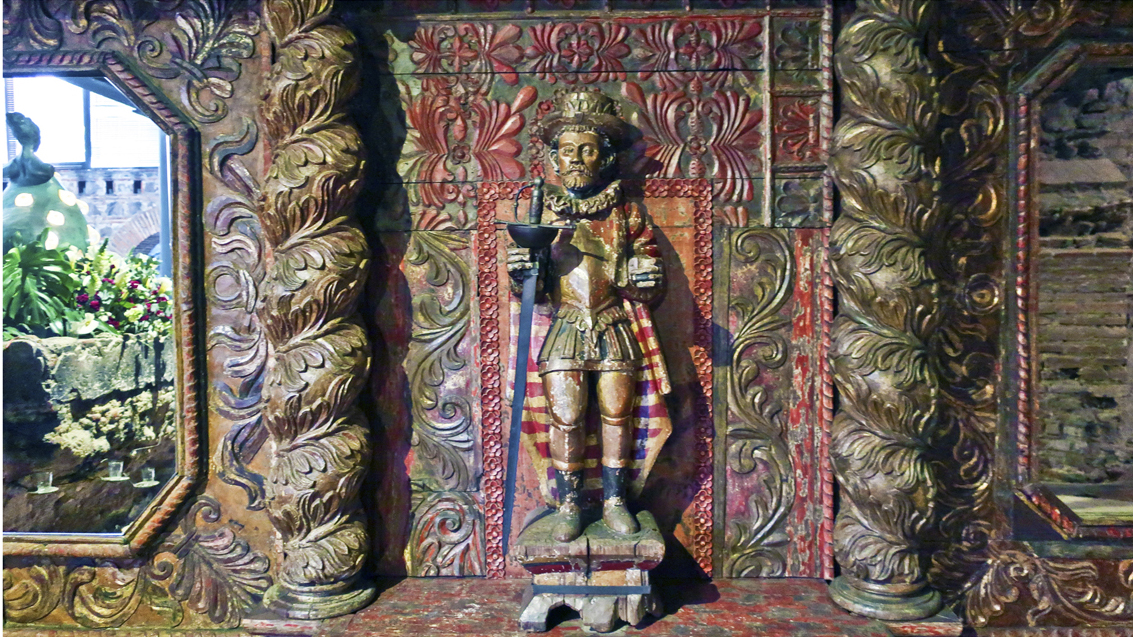
2) You can imagine when Antigua was new
Driving into Antigua’s lush green valley surrounded by misty mountains, it’s easy to see why this corner of Latin America was considered a paradise from which to govern Spain’s colonial empire that included all of the countries of Latin America as well as southern Mexico.
Spanish governors set up headquarters here in the sixteenth century, just as the Renaissance was causing an artistic rebirth in Europe. Antigua’s streets were laid out in the grid pattern popular in Italy and its colonial churches became storehouses of art. The cathedral, monasteries and public buildings took on ornaate Spanish Baroque trimmings over the next two centuries.
But it couldn’t last. After a devastating earthquake in 1773, the capital was moved to what is today Guatemala City, abandoning grand buildings, many of which still stand as empty shells today.
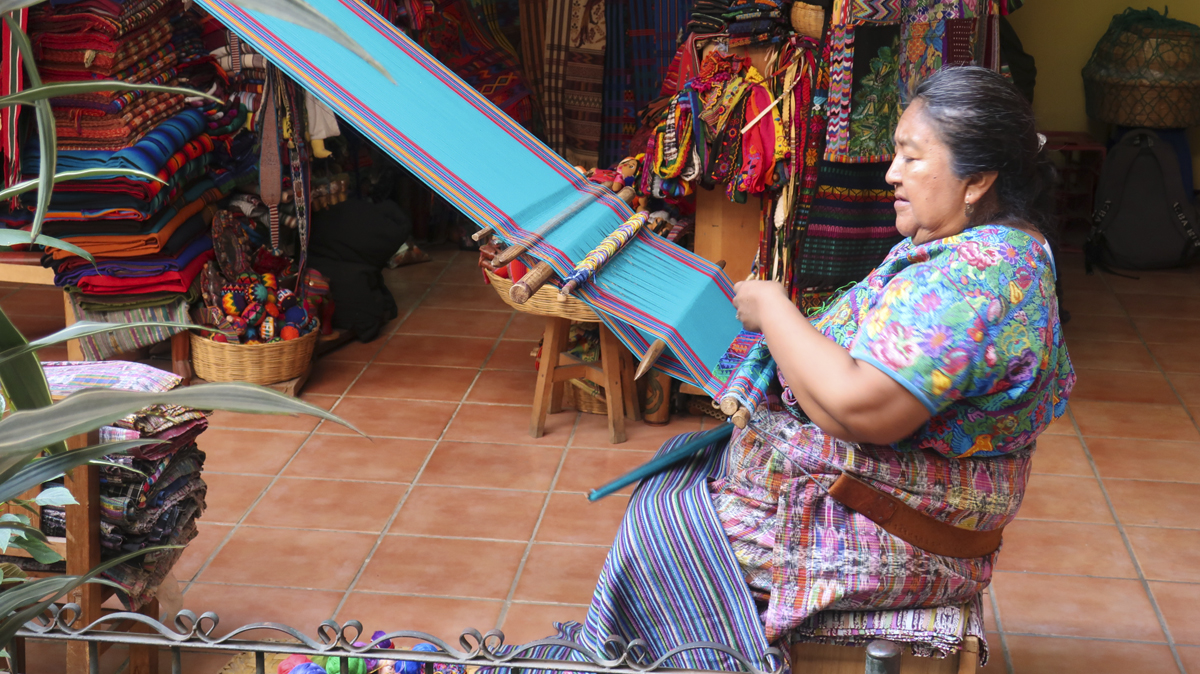
3) Life here has a warp and weave
Our first stop is the Mercado de Artesianas, whose upper floor is billed as a Textile Museum, although in reality it’s mostly a display of mannequins dressed in the intricate, colorful patterns of Guatemala’s many indigenous cultures.
The largest part of the artisan complex consists of small stalls selling locally loomed coats, cloaks and table cloths. You can watch as weavers work on hand looms, but most these days are actually made by power looms in factories. Still, they’re beautiful and so wildly colorful that they’d enliven the décor of a home in many a less tropical country.
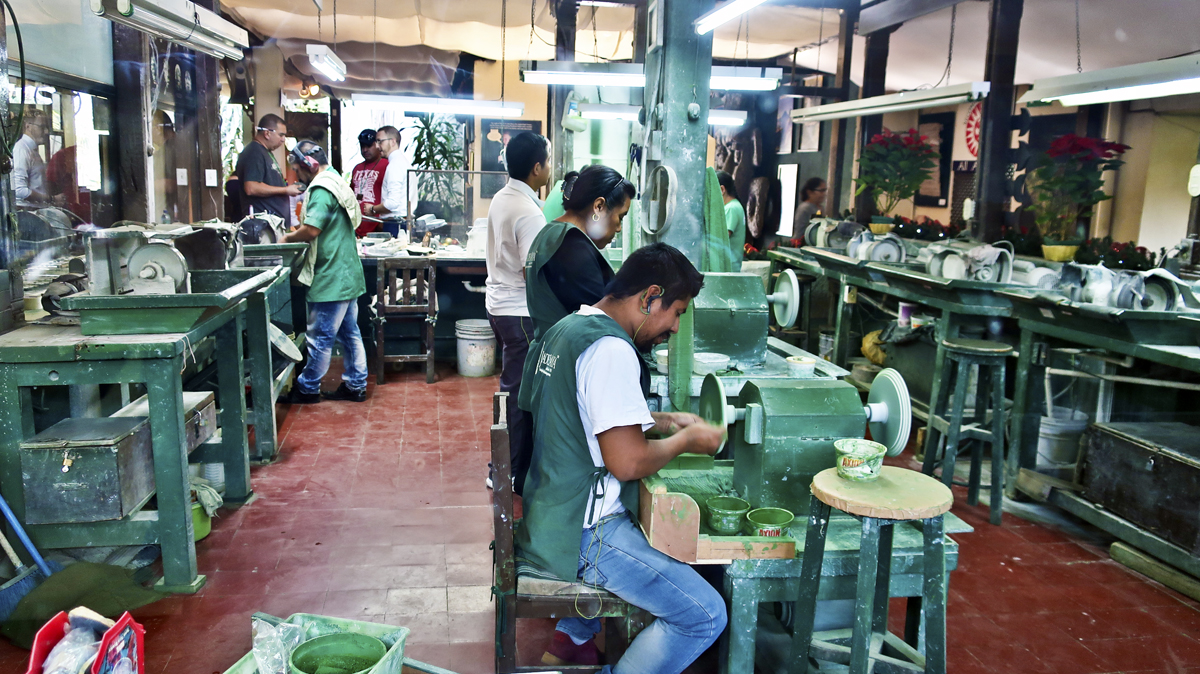
4) There are gems and legends to uncover
Our next stop is a jade workshop run by a couple of American artisans who came here 30 years ago and never left. Vast deposits of jade formed around Antigua because this is where two continental plates collide, creating heat and pressure that transformed the mineral rich rock into semi-precious stone. It’s found in an incredible array of colors, from white to black including beautiful greens and blues. The legendary Mayan ruler Pakal the Great in the late Mayan city of Palenque around 600 AD was mummified with a death mask made of 26 pounds of jade that was mined near Antigua.
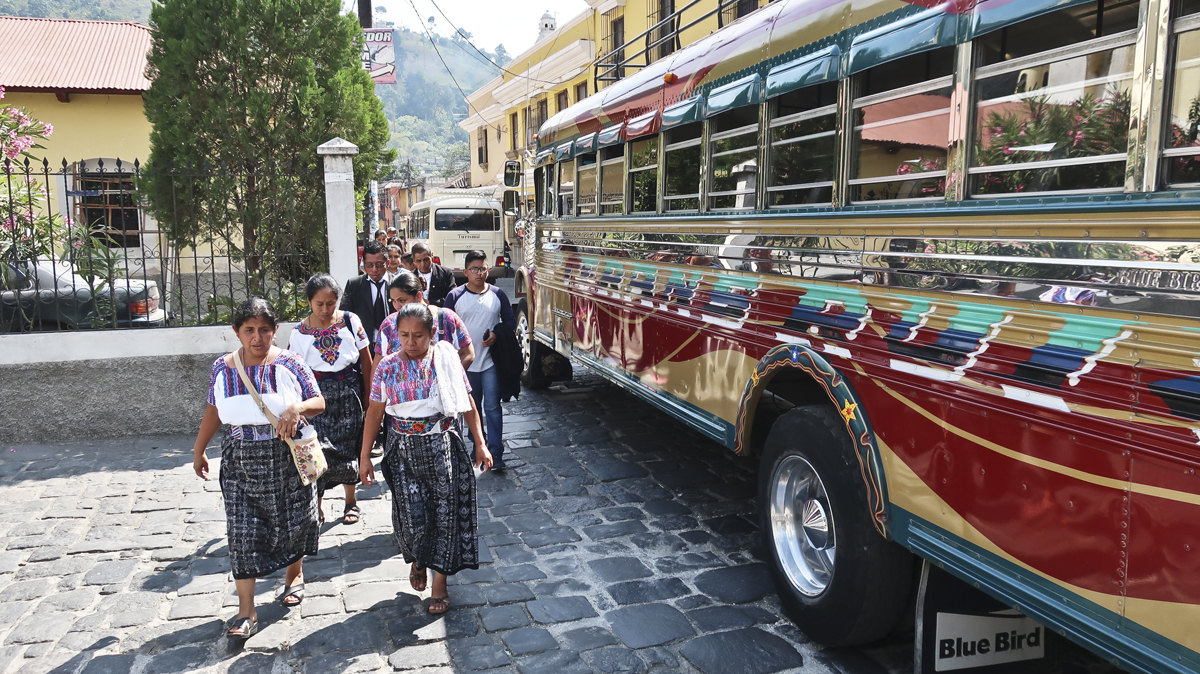
5) Why does a Chicken Bus cross the road?
Fascinating sights on the streets are the shiny, brightly colored “Chicken Buses.” They’re souped-up versions of school buses, tricked out with elaborate chrome trim that always seems to be immaculately polished and their interiors are invariably packed with people. Their nickname comes from the fact that baskets of chickens or even livestock are often strapped to a rack on the top.
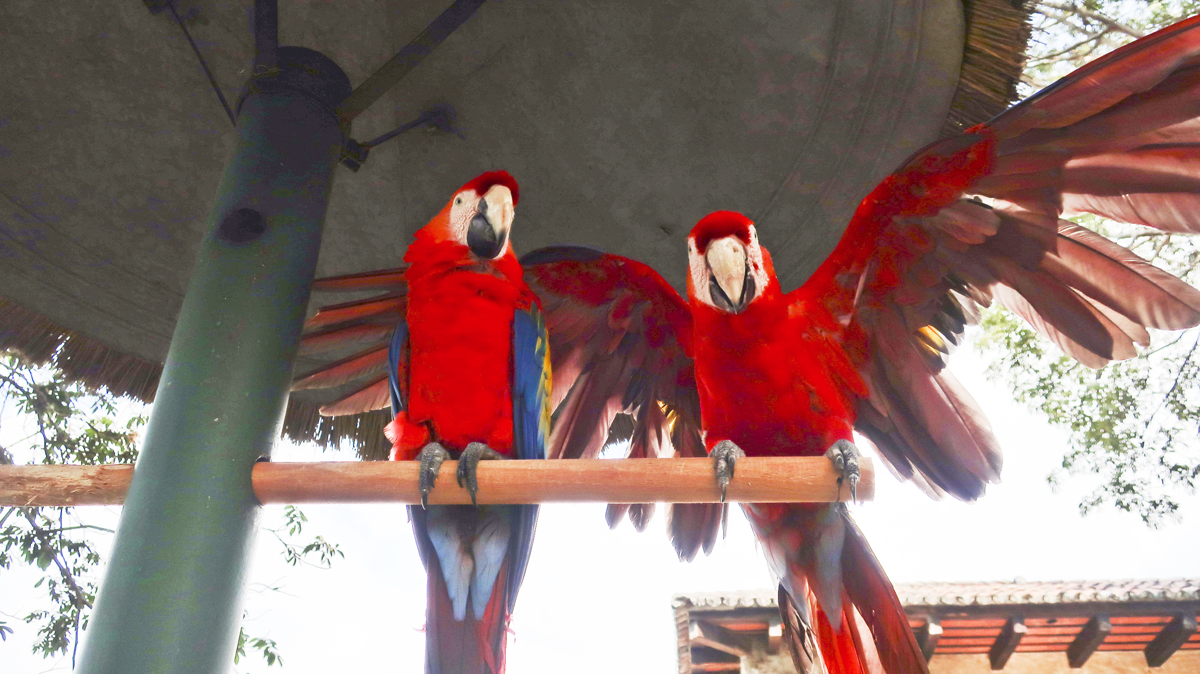
6) Think of it as a cobblestone chess board
For sightseeing and shopping, it’s not difficult to find your way around old Antigua. The blocks are laid out in a pattern similar to a chess board: eight streets that run east and west and eight north and south. The landmarks are the market, parks and churches and convents that date to the glory days before 1773. Classic among them is the cathedral of San Jose, whose catacombs hold the tombs of legendary Spanish invaders, including Don Pedro de Alvarado, who led conquests that made Cuba and southern Mexico part of Spain’s Latin American empire.
The centrally located Arch of Santa Catalina is Antigua’s most famous landmark, framing a view of the (believed to be extinct) Volcan de Agua in the distance. At the southeast corner of the city you can also get a shot of the still very alive Volcan de Fuego, which did its most recent fire show in June, 2018 and is still steaming.
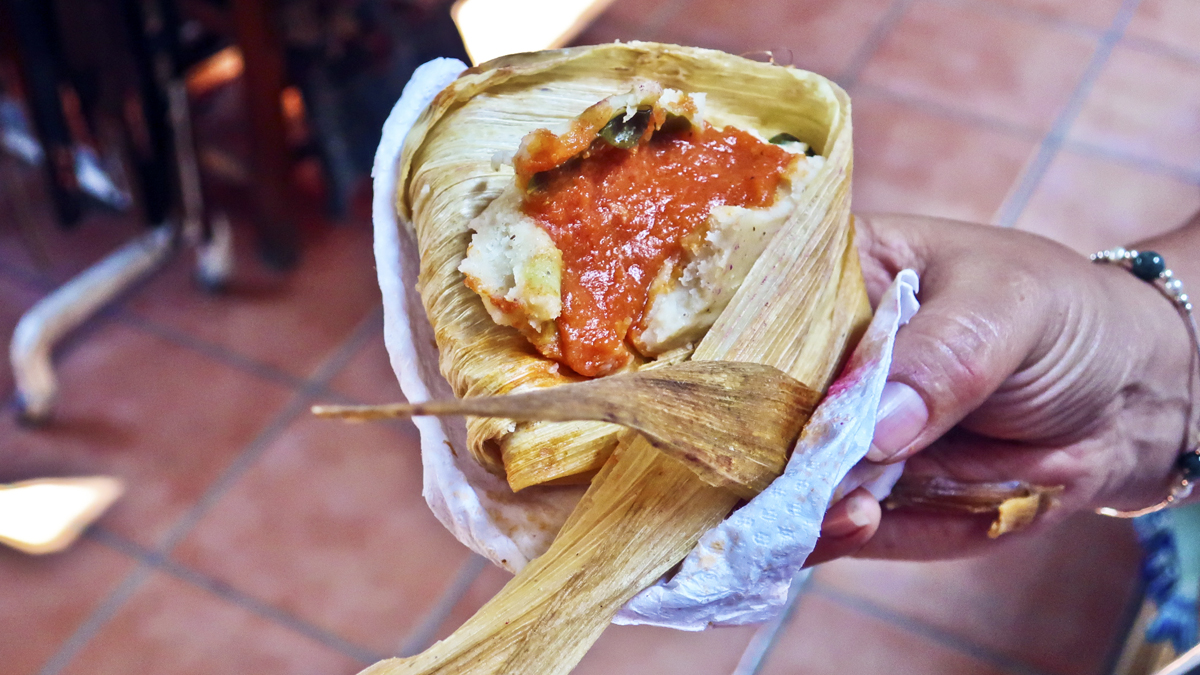
7) You should really become an insider
But don’t judge the city by the views along the cobblestone streets. The repetitive stucco walls are brightly painted in a palette of golds, yellow, pink and pale blue approved by the local heritage protection council and UNESCO, which has declared the city a world heritage site.
You won’t really know how splendid the buildings are inside until you go through the arched doorways that are often tall enough for a horse and rider to enter and into their elaborate courtyards, ornate shops and high-ceilinged restaurants.
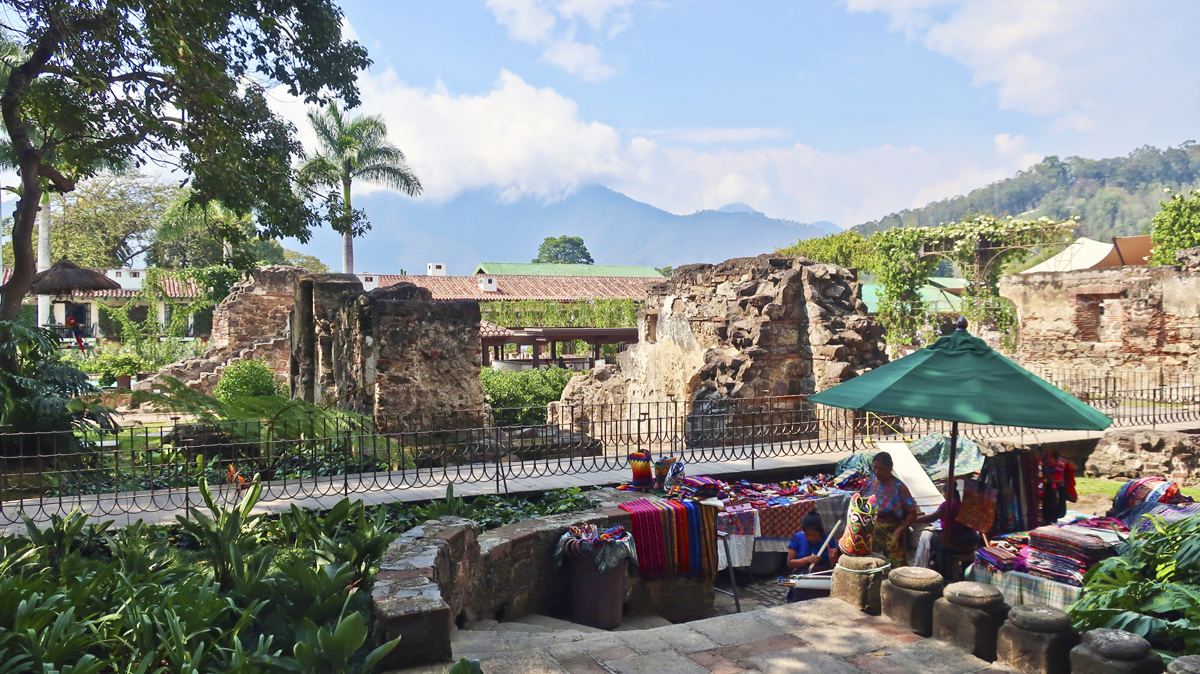
8) Have lunch and contemplate in a monastery garden
A stunning place to have lunch is a restaurant in the forested garden of the high-walled Santo Domingo Dominican monastery that now includes a modern hotel–the Casa Santo Domingo. The former monastery is so large, the hotel that has hundreds of rooms barely fills a corner of the site. The remains of chapels and altars in the former main church of Santo Domingo (complete with glass crypts that still contain ancient bones) are imposing and elegant and they’ve been the backdrop of several movies.
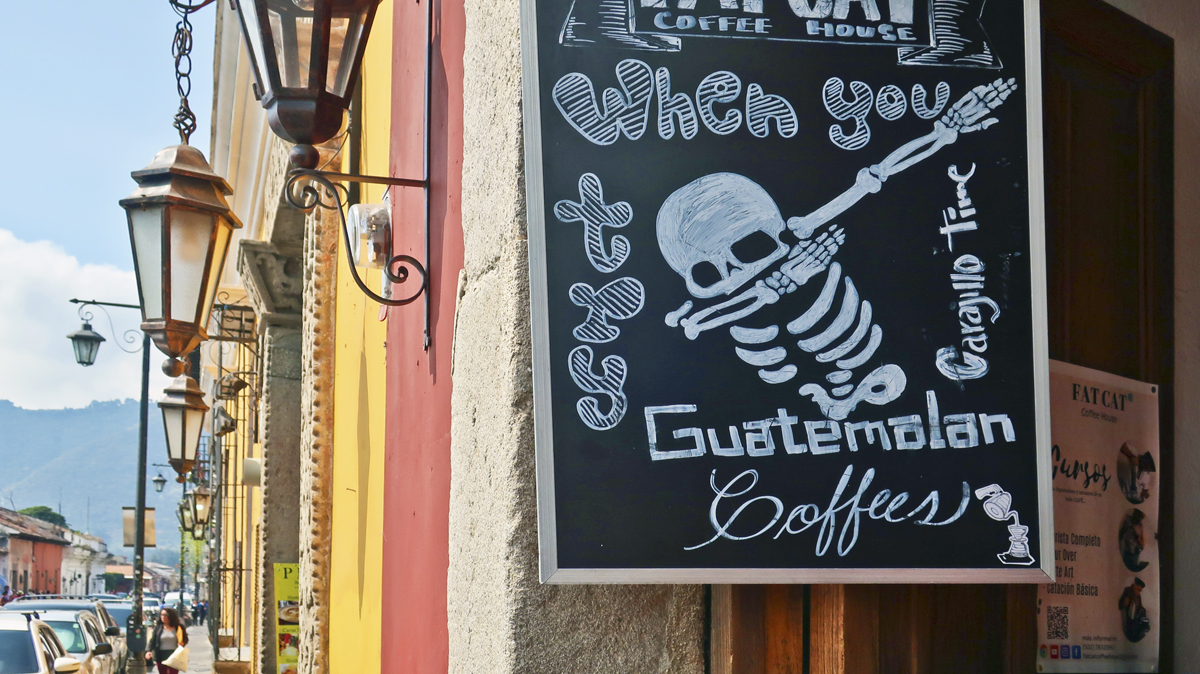
9) It’s quite safe to visit
Safety is a legitimate question because this part of Central America hasn’t been getting the greatest press lately, in large part due to the fact that many people in this region are looking to escape poverty by emigrating to America. But tourism is quite safe in Guatemala as long as you take the same precautions for your belongings and awareness of your surroundings you would in any country.
Antigua has become a magnet for visitors from North America and Europe. The people you’ll meet here are invariably charming, and they can certainly use the jobs and dollars that tourism generates.
A number of tour options exist for cruise guests who want to visit Antigua. On a recent visit to Puerto Quetzal, complimentary tours offered by Regent’s Seven Seas Explorer included day-long bus and walking tours of highlights, a hop on hop off bus option for touring at your own pace and specialty tours with visits to coffee blenders and local craft brewers. The rainy season on the coast is May through October and the rest of the year is invariably dry.






Another wonderful and insightful article, thank you Mr. Immen.
I’ve been thinking lately how cool it would be to have you lead a small group of cruisers to some of the places you’ve been writing about, or want to do so.
Personally I’ve become very addicted to cruising in recent years and am currently averaging about 2-3 cruises a year. Your thoughts?